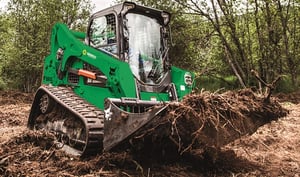West Africa remains a cornerstone of global gold production, with Mali and Senegal emerging as dynamic contributors in this resource-rich region. As governments retool policies to capture more value from their natural resources, companies operating in these jurisdictions are adapting with efficiency-focused innovation, exploration success, and improved community integration. The trajectory of gold mining in both Mali and Senegal reflects not only rising demand but also strategic evolution—a context in which forward-thinking developers are thriving.
Mali, traditionally one of Africa’s largest gold producers, experienced a dip in formal gold output in 2024 due to regulatory delays and operational suspensions. Nonetheless, the country recorded a significant 52.5% increase in government gold revenues, underscoring improved fiscal mechanisms and the enduring profitability of the sector. Central to Mali’s new approach is the construction of a Russia-backed gold refinery in Bamako, signalling a policy shift toward greater in-country beneficiation and value retention. Simultaneously, a partial lifting of a moratorium on new mining permits in early 2025 has reopened the path for strategic project approvals.
In contrast, Senegal’s gold industry, though smaller, is gaining traction. In the first half of 2024, the country produced over 100,000 ounces of gold, generating revenues exceeding CFA 150 billion. However, the sector remains heavily reliant on foreign procurement, pointing to a growing imperative for local supply chain development. Despite this, the regulatory environment in Senegal is generally seen as stable and supportive of exploration, making it an appealing jurisdiction for emerging players.
These twin markets share not only geological continuity but also a critical dependence on artisanal and small-scale mining (ASM), which supports millions across the region. Governments face the dual challenge of formalising the ASM sector while balancing large-scale investment with community inclusion and environmental stewardship.
Against this backdrop, Cora Gold exemplifies a new wave of exploration and development companies aligning with West Africa’s evolving gold narrative. Its flagship Sanankoro project in southern Mali has shown consistent resource growth, with a current estimate exceeding one million ounces. Enhanced metallurgy and a planned update to the project’s feasibility study reflect a commitment to both technical advancement and economic resilience. At the same time, the company’s drilling initiatives in Senegal’s Madina Foulbé zone illustrate a portfolio-wide approach to unlocking value across borders.
Positioned at the heart of a high-potential geological belt and navigating a regulatory landscape in transition, Cora Gold continues to progress its assets with discipline and focus.
Cora Gold Ltd (LON:CORA), together with its subsidiaries, explores for and develops mineral projects in West Africa. The company primarily explores for gold deposits. Its flagship project is the Sanankoro Gold project located in the Yanfolila Gold Belt, Southern Mali.






































